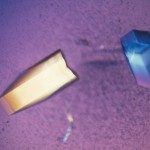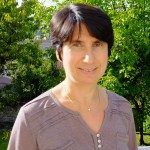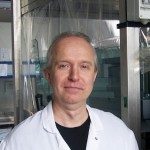Link to Pubmed [PMID] – 36770826
Link to DOI – 10.3390/molecules28031156
Molecules 2023 Jan; 28(3):
The chemokine receptor CXCR4 and its ligand CXCL12 regulate leukocyte trafficking, homeostasis and functions and are potential therapeutic targets in many diseases such as HIV-1 infection and cancers. Here, we identified new CXCR4 ligands in the CERMN chemical library using a FRET-based high-throughput screening assay. These are bis-imidazoline compounds comprising two imidazole rings linked by an alkyl chain. The molecules displace CXCL12 binding with submicromolar potencies, similarly to AMD3100, the only marketed CXCR4 ligand. They also inhibit anti-CXCR4 mAb 12G5 binding, CXCL12-mediated chemotaxis and HIV-1 infection. Further studies with newly synthesized derivatives pointed out to a role of alkyl chain length on the bis-imidazoline properties, with molecules with an even number of carbons equal to 8, 10 or 12 being the most potent. Interestingly, these differ in the functions of CXCR4 that they influence. Site-directed mutagenesis and molecular docking predict that the alkyl chain folds in such a way that the two imidazole groups become lodged in the transmembrane binding cavity of CXCR4. Results also suggest that the alkyl chain length influences how the imidazole rings positions in the cavity. These results may provide a basis for the design of new CXCR4 antagonists targeting specific functions of the receptor.


